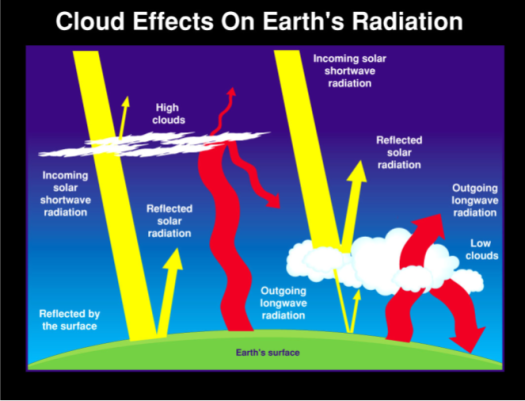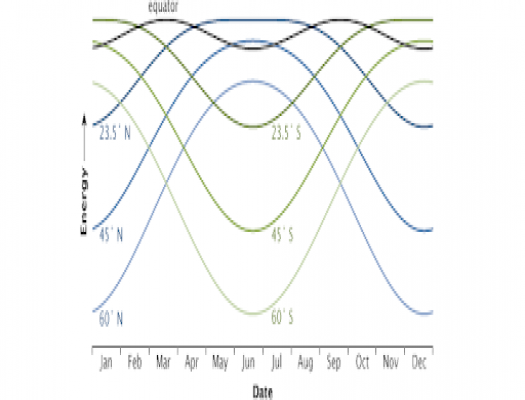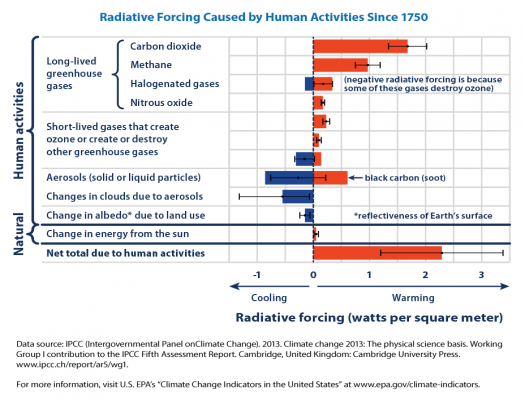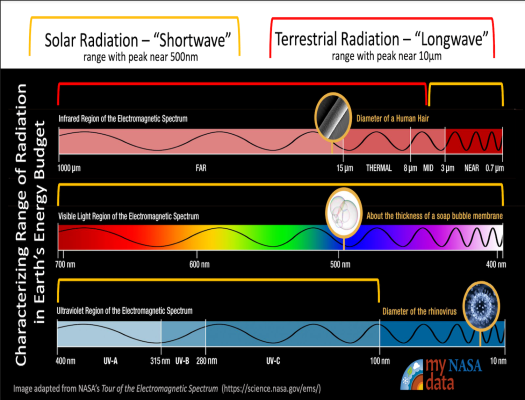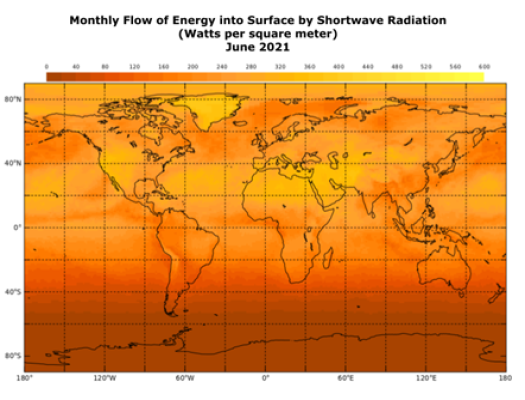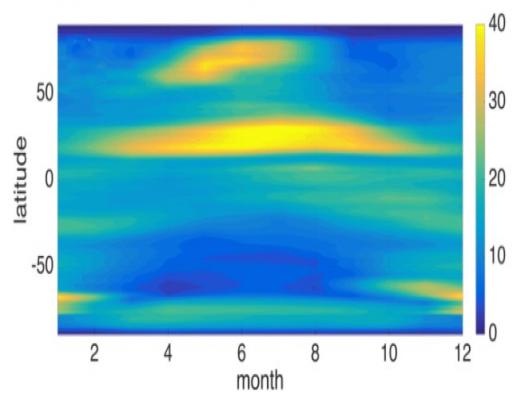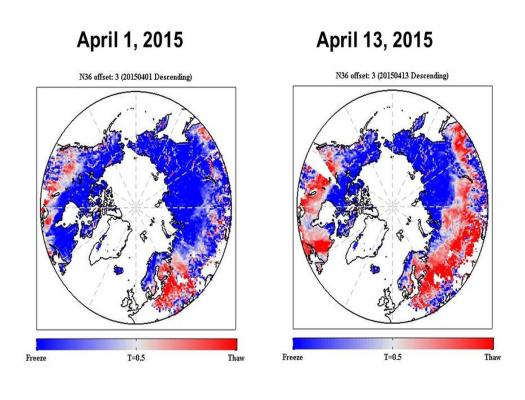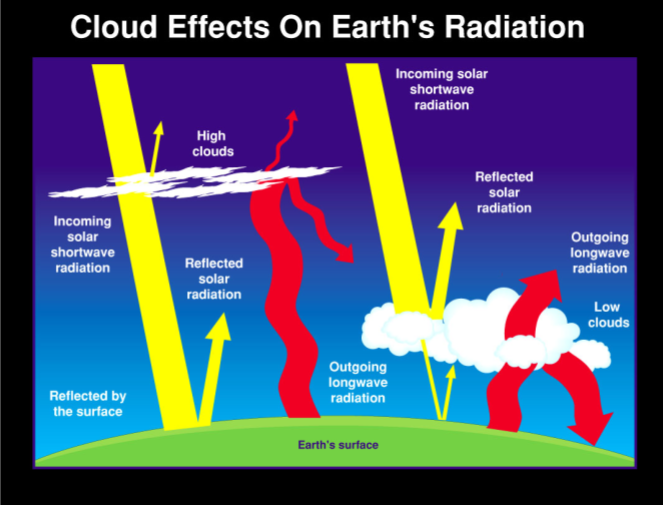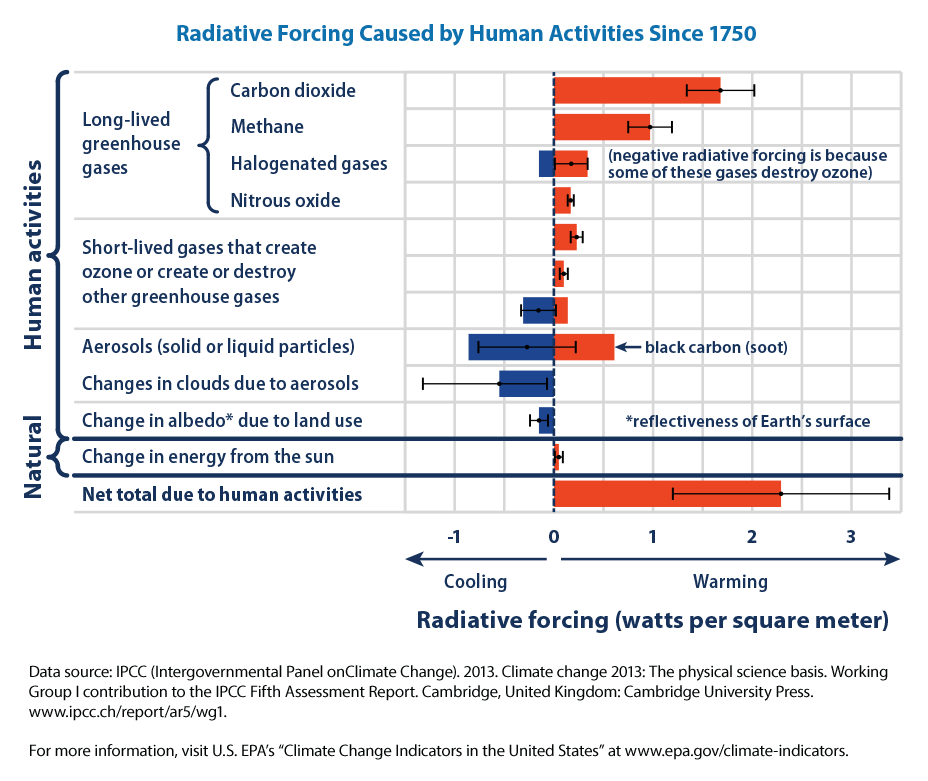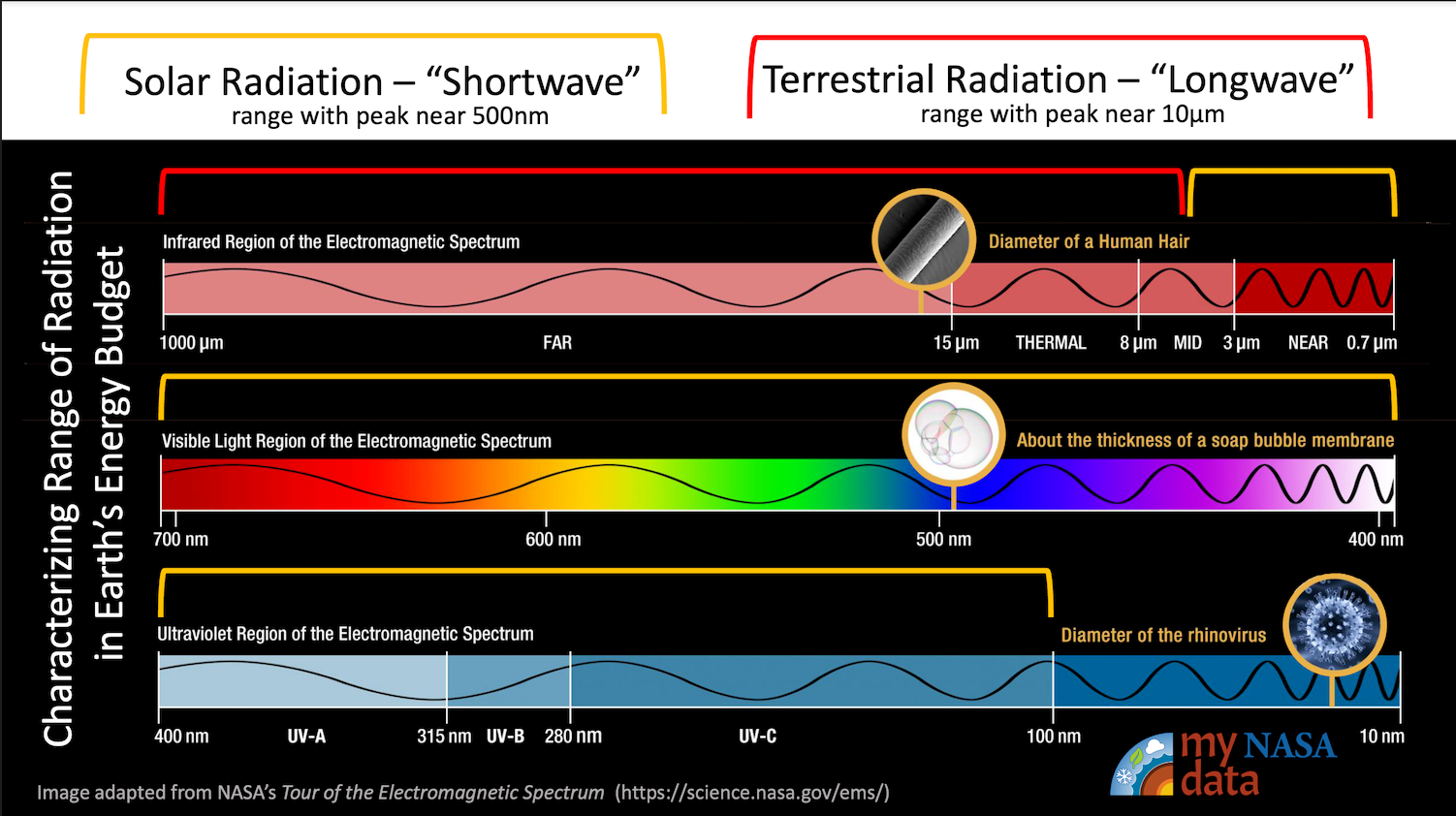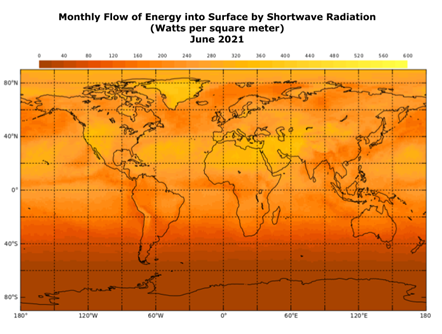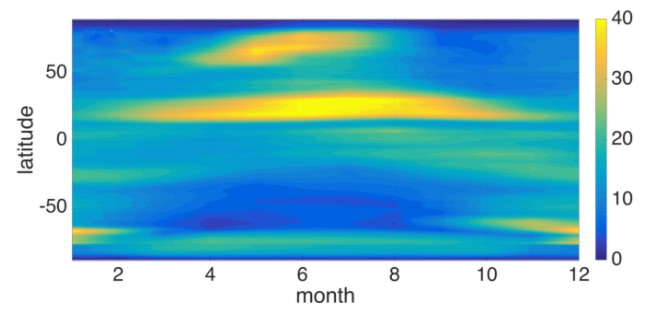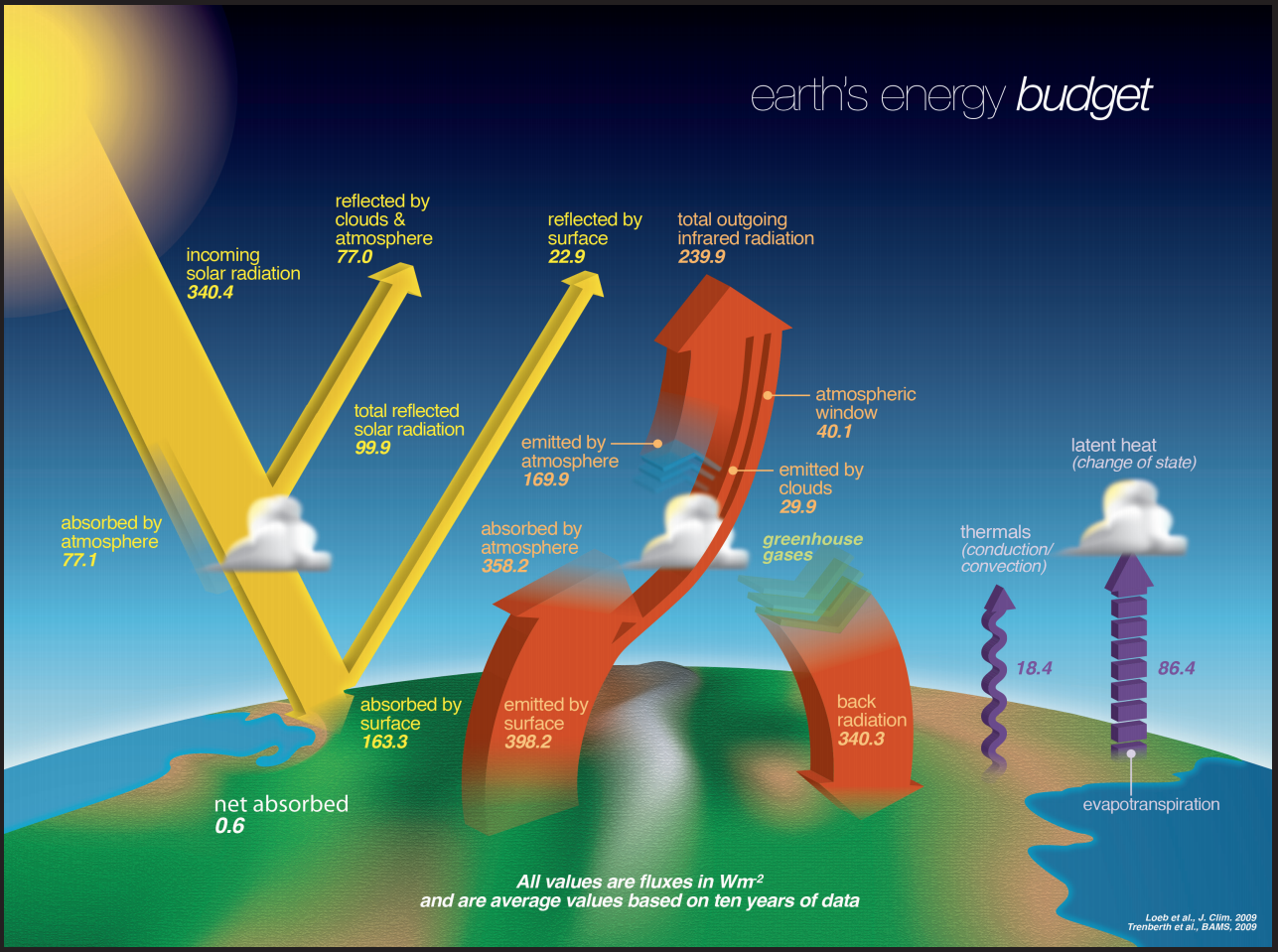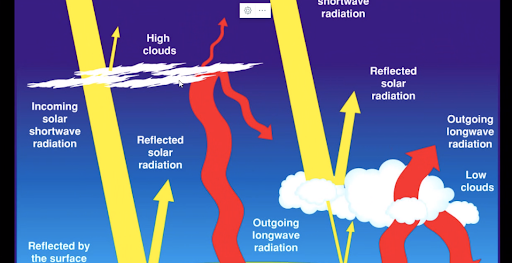Earth strives to maintain a balance between the overall amount of incoming and outgoing energy at the top of the atmosphere. This is called Earth’s energy budget or Earth's radiation budget.
>> Read More >>
Just one moment,
loading Earth as a System...
Featured Mini Lessons
-
-
-
-
-
-
-
-
Grade Level: 6-8, 9-12
This lesson is designed to help students analyze the interaction between different cloud heights and Earth's incoming and outgoing energy.
Grade Level: 6-8, 9-12
Students will analyze a graph showing the amounts of peak energy received at local noon each day over the year changes with different latitudes.
Grade Level: 9-12
In this mini lesson, students analyze a bar graph showing the relative forcings from natural and human factors that affect Earth's climate. They use information from this graph to assess the relative importance of these factors.
Grade Level: 6-8, 9-12
Using an infographic, students describe differences in electromagnetic radiation that is part of a model of Earth’s energy budget by applying the defined terms of Shortwave Radiation and Longwave Radiation.
Grade Level: 6-8
Students differentiate between data sets of monthly shortwave radiation and monthly cloud coverage to discover a relationship between radiation and clouds by answering analysis questions.
Grade Level: 6-8, 9-12
Students watch a NOVA PBS video about the different effects of clouds on climate and Earth's energy budget. Then they answer questions and brainstorm to complete a flow chart of events that might occur if the percentage of absorbing clouds increases.
Grade Level: 9-12
Students will analyze a graph showing the variation of energy imbalance on Earth over the year along different latitudinal zones and answer the questions that follow.
Grade Level: 6-8, 9-12
Students analyze two North Pole orthographic data visualizations produced from soil moisture data.
Previous
Next
Earth's Energy Budget Mini Lesson list
Grade Level: 6-8,
9-12
This lesson is designed to help students analyze the interaction between different cloud heights and Earth's incoming and outgoing energy.
Grade Level: 6-8,
9-12
Students will analyze a graph showing the amounts of peak energy received at local noon each day over the year changes with different latitudes.
Grade Level: 9-12
In this mini lesson, students analyze a bar graph showing the relative forcings from natural and human factors that affect Earth's climate. They use information from this graph to assess the relative importance of these factors.
Grade Level: 6-8,
9-12
Using an infographic, students describe differences in electromagnetic radiation that is part of a model of Earth’s energy budget by applying the defined terms of Shortwave Radiation and Longwave Radiation.
Grade Level: 6-8
Students differentiate between data sets of monthly shortwave radiation and monthly cloud coverage to discover a relationship between radiation and clouds by answering analysis questions.
Grade Level: 6-8,
9-12
Students watch a NOVA PBS video about the different effects of clouds on climate and Earth's energy budget. Then they answer questions and brainstorm to complete a flow chart of events that might occur if the percentage of absorbing clouds increases.
Grade Level: 9-12
Students will analyze a graph showing the variation of energy imbalance on Earth over the year along different latitudinal zones and answer the questions that follow.
Grade Level: 6-8,
9-12
Students analyze two North Pole orthographic data visualizations produced from soil moisture data.
Grade Level: 6-8,
9-12
This mini lesson focuses on Earth's Energy Budget and the surface effects that occur in Central Australia. Students review a line graph depicting net radiation in Central Australia related to a multiyear drought from 2002 - 2009 and answer the questions.
Grade Level: 9-12
Students analyze diagrams showing the effects of clouds on Earth’s Radiation and answer the questions that follow. This mini lesson is designed to help students analyze the interaction between clouds and Earth's incoming and outgoing energy.
Earth Energy Budget landing page. Explore maps, graphs, data, and related education resources. These resources include lesson plans, mini lessons, activities, and datasets for teachers and students.


